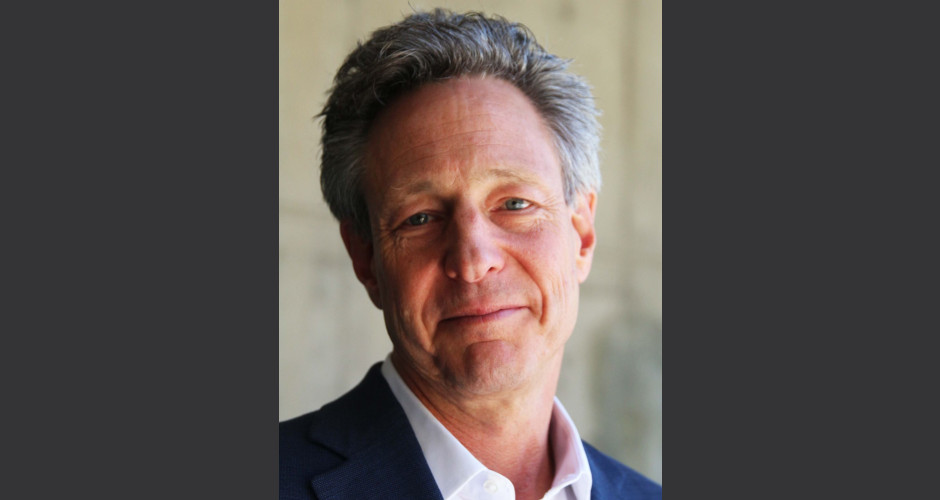Above: Mark Bransom, executive director of Klamath River Renewal Corporation, the non-profit entity tasked with facilitating the removal for four dams along the Klamath River.
— Published with Permission of HeraldandNews.com —
How will the dams along the Klamath River be removed as proposed? The Klamath River Renewal Corporation (KRRC) has a plan for that.
The Bay Area-based dam removal entity, which is awaiting the go-ahead to remove the John C. Boyle, Iron Gate, and Copco 1 and 2 hydroelectric dams, filed its Definite Plan to remove them with the Federal Energy Regulatory Commission (FERC) on Thursday.
The 2,300-page document lays out how the nonprofit plans to handle the removal of the dams, as well as answers to FERC’s questions from a March 15 federal order. The plan was written for KRRC by AECOM, an Oakland, Calif., firm, as well as Sacramento-based CDM Smith, and River Design Group from Corvallis, Ore.
The regulatory commission is expected to review the removal and restoration plan, to make sure the technical, legal and fiscal capacities are in place for KRrC to become the licensee for the dams. The Definite Plan is part of KRRC’s application to FERC for the transfer of the FERC license to operate, but eventually remove the dams.
Drawdown of the reservoirs is planned for January through mid-March 2021 by a contractor chosen by KRRC, which will provide a dry work area for dam removal, according to the plan. Construction impacts, recreation opportunities, replacing the city of Yreka’s water pipeline across Iron Gate Dam, protection of aquatic resources, and providing for ongoing fish hatchery operations in relation to the dam removal are also detailed in the document.
Mark Bransom, KRRC executive director, called the filing of the plan a major milestone in the process to remove the dams.
“KRRC has developed this plan with tremendous respect for the complexity of the project and with extraordinary care in its efforts to enhance benefits and minimize impacts to local communities,” Bransom said in a news release.
“I am proud of this achievement and I look forward to the next steps in the regulatory review process.”
Bransom also spoke with the Herald and News last Friday via phone following his and other KRRC staff tours of some of the dams, in anticipation of the plan’s release.
“You can think of the Definite Plan as the decommissioning proposal from the KRRC,” Bransom said. “It really is the KRRC’s proposal on how we would go about decommissioning the dams, and included in the project is not just the decommisioning of the dams itself but the other portions of the work, including aquatic resources, mitigation measures, or project components, recreational plan process, a variety of things of that sort, current cost estimates.
“It really is a comprehensive document for FERC on everything we know today about how to implement the (dam removal) project,” he added.
“The next big step for us will be to provide that Definite Plan to the Independent Board of Consultants that FERC approved recently and we very much look forward to … the Board of Consultants beginning their review of the Definite Plan,” Bransom said. “We believe that that is an important step to continue to develop and refine the plan, again as a proposal, and we expect that it will undergo some refinements and improvements through this independent review process.”
A review by the consultants, made up of subject matter experts pre-approved by FERC, is expected to start in August. The board operates on behalf of FERC and is under the agency’s direction to provide independent review of the project. KRRC is expected to choose a contractor for the project in 2019, according to the plan.
“FERC has directed the Board of Consultants to prepare a report to the KRRC on their questions, observations, and recommendations,” Bransom said. “That will really be the next thing we will look forward to having with regard to the Definite Plan.”
“We would anticipate there’s high probability that FERC would have additional questions,” Bransom added.
“It will really be up to FERC to continue any other evaluations that they may need to make to consider our application for transfer of the license.”
FERC will assess whether there’s sufficient information to make the determination on that application, or whether they will have additional application requests.
Bransom said, since the plan is a public document, it’s anticipated that there will be interest from the public in providing comments as well.


